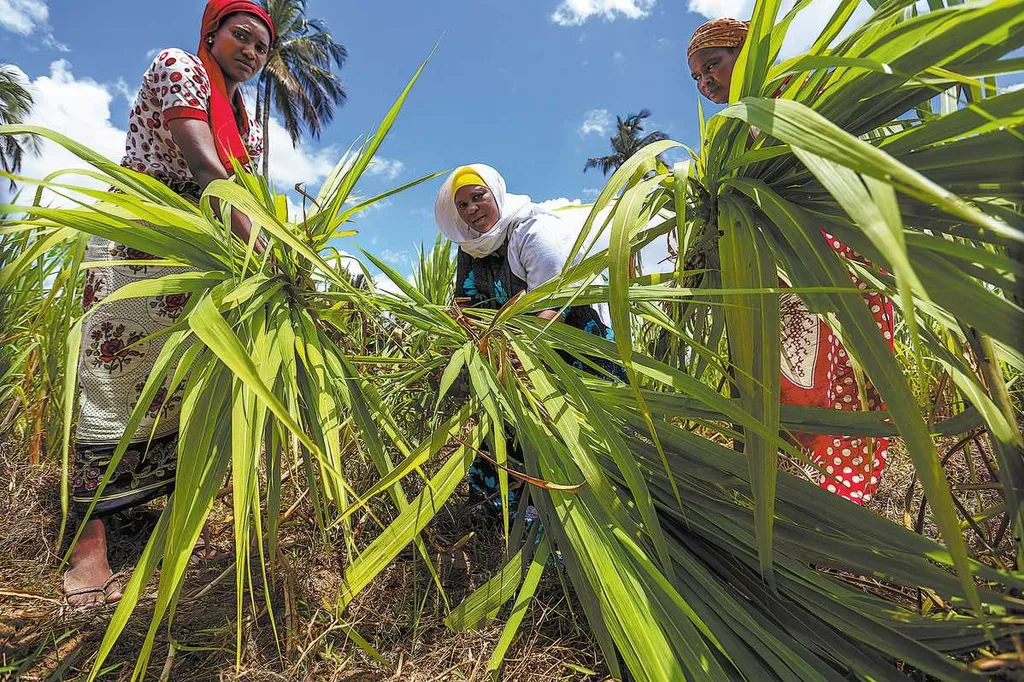In a quiet village on the outskirts of Kigali, Leonidas Mushimiyimana oversees a bustling workshop where trays of oyster mushrooms sprout from stacks of white plastic tubes. His operation, Deyi Ltd, produces up to 600 kilograms of fresh mushrooms weekly—40 percent of which is dried and milled into powder to extend shelf life and reduce waste. Mushimiyimana’s journey began a decade ago, when he traveled to China’s Fujian Agriculture and Forestry University to study Juncao, a technology that uses fast-growing grass as a substrate for mushroom cultivation. Today, his business is part of a broader transformation in Rwanda, where a once-niche agricultural practice has grown into a thriving industry with far-reaching economic and environmental benefits.
The roots of this shift trace back to 2006, when China and Rwanda launched a scientific exchange program under the Forum on China-Africa Cooperation. The collaboration introduced Juncao—a term combining the Chinese words for “mushroom” (*jun*) and “grass” (*cao*)—to Rwandan farmers. Unlike traditional wood-based cultivation, Juncao offers a renewable, high-yield alternative that eases pressure on forests while boosting incomes. The grass, engineered in China in the 1980s, has since spread to over 100 countries, but its impact in Rwanda stands out for its scale and integration into national development strategies.
At the heart of this movement is the China-Rwanda Agriculture Technology Demonstration Center in Huye district, established in 2011. Here, more than 40,000 farmers—many of them women—have learned to cultivate 12 varieties of edible and medicinal mushrooms using Juncao substrates. Bellancile Uzayisenga, coordinator of the Rwanda Agriculture and Animal Resources Development Board’s biotechnology program, notes that the technology’s adoption has been accelerated by its alignment with government priorities: poverty reduction, women’s empowerment, and ecological conservation. “The center didn’t just introduce a farming technique,” she explains. “It sparked an entrepreneurial ecosystem.”
That ecosystem is now feeding into Rwanda’s school nutrition programs, where mushrooms have become a staple for their high protein and micronutrient content. To meet demand, the government distributes roughly 10,000 mushroom-growing tubes monthly to farmers while training primary school students in cultivation—a dual strategy to improve child health and foster early agricultural skills. Uzayisenga adds that over 2,000 Rwandans have received hands-on Juncao training in China, including two who pursued PhDs in the field, signaling the technology’s long-term integration into the country’s academic and industrial frameworks.
For women like Suzanne Nikuze, Juncao has been a pathway to economic independence. After training at the Huye center in 2018, Nikuze turned her backyard experiment in Kigali’s Gasabo district into a full-fledged agribusiness. Her company now employs 30 people—80 percent of them women—and has trained over 400 young farmers, most of whom are female. “Women bear the brunt of household responsibilities,” she says. “Mushroom farming offers them a way to earn income without leaving their communities.” Her model has gained government backing, with scholarships covering training costs for new recruits.
The technology’s versatility extends beyond food production. Mushimiyimana, for instance, repurposes spent mushroom substrates into “green charcoal”—a mix of carbonized Juncao residue and cassava flour that burns cleaner than traditional firewood. The innovation addresses two critical issues: deforestation and indoor air pollution, which disproportionately affects women tasked with cooking. “It’s not just about selling mushrooms,” he says. “It’s about creating a circular economy where waste becomes a resource.”
Yet challenges remain. While domestic demand is strong, exporters like Mushimiyimana await regulatory approvals to tap into regional markets in the Democratic Republic of Congo, Kenya, and Uganda. Scaling production to meet export standards requires further investment in processing infrastructure and quality control—a hurdle that Rwanda’s mushroom producers are actively addressing through collective organizations like the Mushroom Producers and Exporters Association.
What began as a bilateral technical exchange has evolved into a homegrown industry with ripple effects across nutrition, gender equity, and environmental sustainability. In Zanzibar, Tanzania, farmers harvested their first Juncao crops this September, hinting at the technology’s potential to replicate Rwanda’s success elsewhere in Africa. For now, Rwanda’s experience offers a blueprint: how a simple grass, paired with targeted training and policy support, can grow into something much larger—a tool for systemic change.

